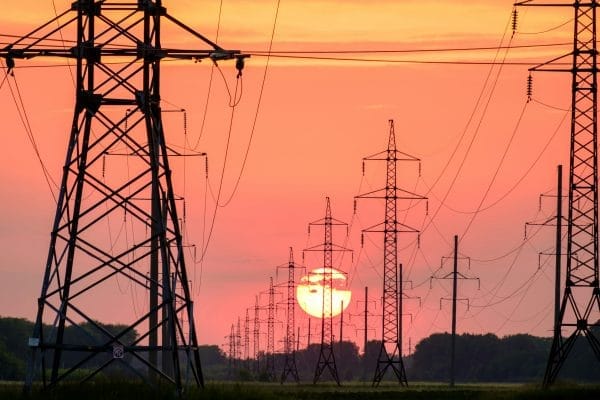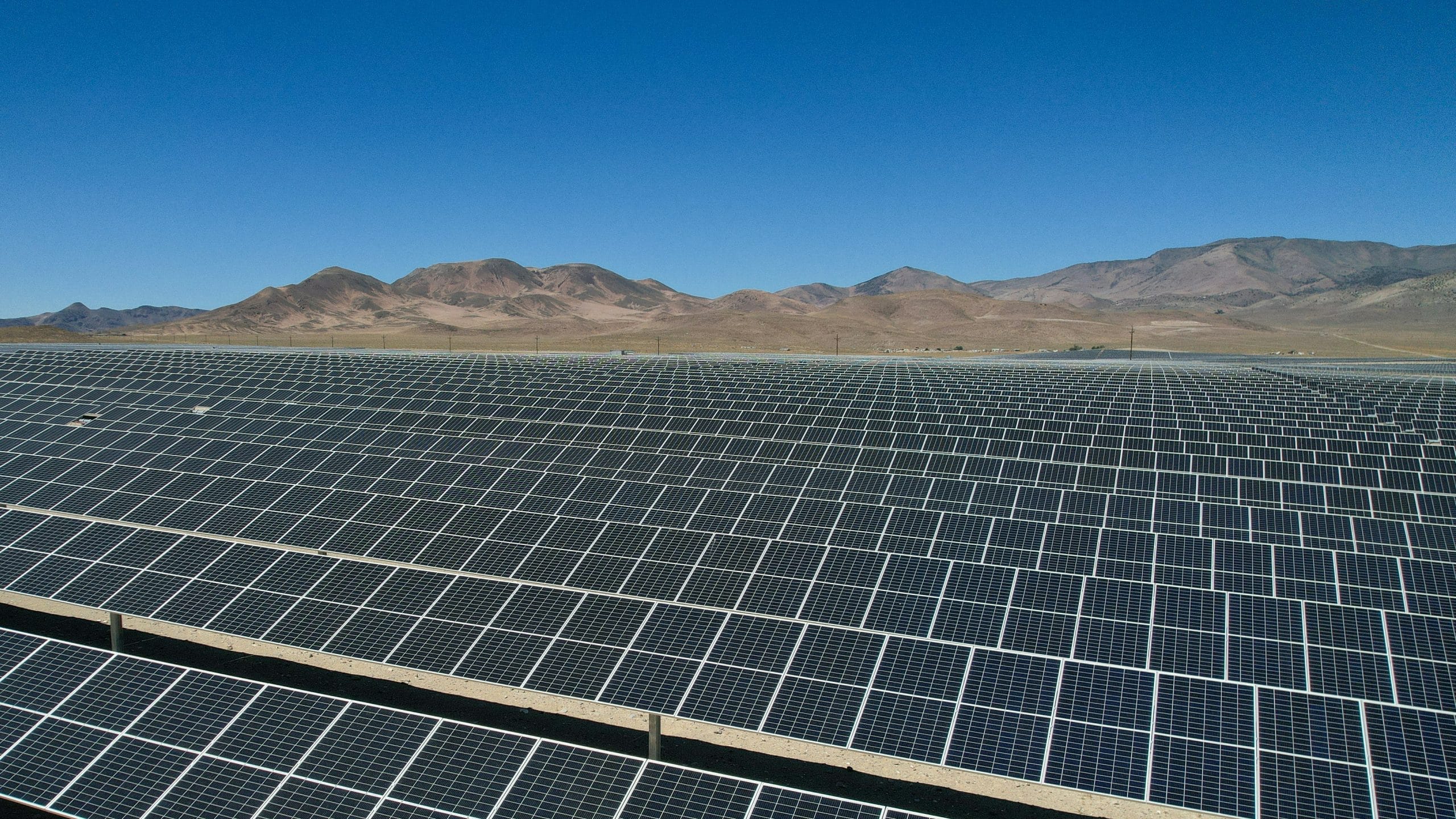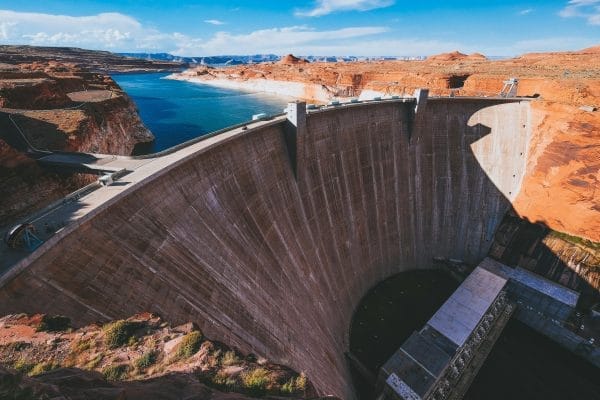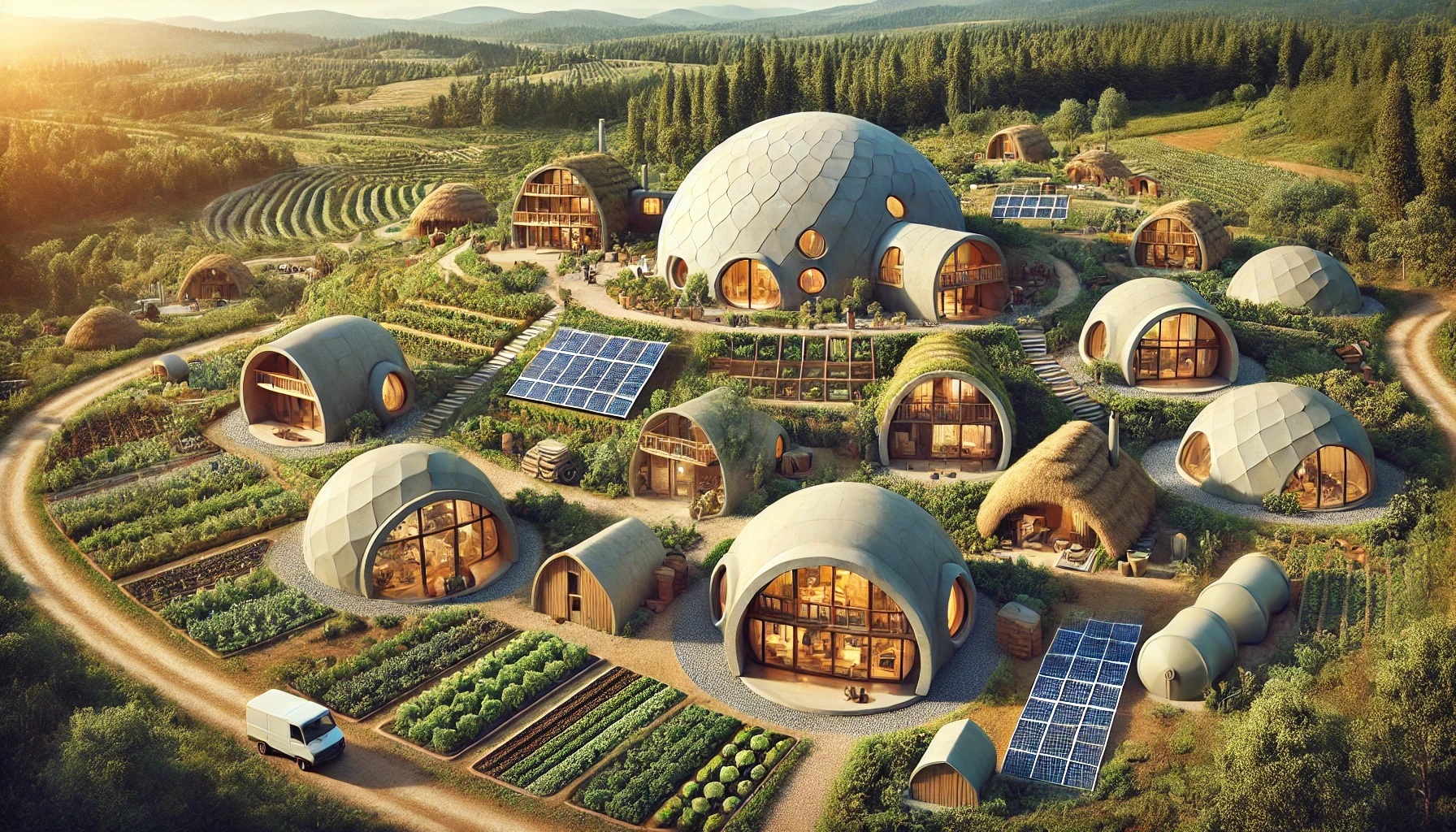This is the first part of a five-part series of short essays based on conversations with ChatGPT (a discourse, editing and refining, and challenging some ideological and political biases, or adherence to “the narrative”), with an emphasis on covering the basics of self-reliance, self-sufficiency, and other critical considerations for all of us today – and in the near future. It was initially inspired by a story about the increasing number of cancelled “renewable energy” projects, totaling many billions of dollars, and grew from there.
This first part on energy is longer than the rest, as it delves deeper into the complexities and misguided notions of modern energy production. There is a persistent narrative that wind and solar are the future, yet the numbers, environmental costs, and practical realities tell a different story. These technologies require a massive outlay of resources and materials, not only in their initial construction but also in ongoing maintenance, repair, and eventual replacement – none of which are trivial. Constant exposure to the elements ensures they will not even last a human generation, and to my knowledge, little to none of their material makeup can be reused or recycled, exacerbating what I see as a massive financial and environmental fraud – and, at least in part, an industrial cover-up.
We have better options. This discussion explores some of them and further inspired me to address other fundamental human needs. With that in mind, here are some key areas you may want to research further in pursuit of a more resilient, self-reliant, authentic, and fulfilling life.
This series will cover energy, shelter, food, and water, followed by additional considerations such as medicine, community, skills, waste management, and alternative economies.
Part 2: Shelter, Part 3: Food, Part 4: Water, Part 5: True Independence
Part 1: Energy
Rethinking Energy: Beyond Wind, Solar, and the Controlled Narrative
Introduction
The energy industry, like many others, is controlled by powerful interests that dictate which technologies are funded, which are suppressed, and which are allowed to reach mainstream adoption. We are led to believe that wind and solar are the future of renewable energy, yet these sources remain unreliable, inefficient, and dependent on government subsidies and taxpayer funding. Meanwhile, alternative and potentially revolutionary technologies are ignored, ridiculed, or actively suppressed.
It is not the high initial costs that should be considered a risk; it is the long-term inefficiency, environmental destruction, and deliberate obfuscation of better solutions that pose the real danger. If governments and financial institutions can conjure trillions of dollars out of thin air, support proxy wars, and utilize the bottomless pit of resources cleverly filed under “foreign aid” — while surreptitiously employing and repurposing NGOs to foment perpetual conflicts with hundreds of billions of dollars — then the argument that we cannot afford to invest in superior energy sources holds no weight.
The real issue is control — who gets to produce energy, who profits, and who is left dependent. This pattern plays out in virtually every modern institution and industry. If “the market” drives innovation, it’s critical to understand who drives “the market” — or things will never change for the better. Without a true shift, the future we hope for — one that is more human, humane, and truly sustainable — will remain out of reach.

Passing Wind — A Quick Analysis of Wind Power
The amount of raw materials required to build a single wind turbine depends on its size and capacity, but for a typical onshore 3 MW wind turbine, the materials required are approximately:
- Steel: ~300–400 tons (for the tower and other components)
- Concrete: ~500–800 tons (for the foundation)
- Fiberglass/Resin: ~20–30 tons (for the blades and nacelle)
- Copper: ~4–10 tons (for wiring and generator components)
- Aluminum: ~3–5 tons (various parts)
- Rare Earth Elements: ~0.5–1 ton (for the permanent magnets in the generator, primarily neodymium and dysprosium)
For offshore wind turbines, which can exceed 12–15 MW, these numbers scale up significantly, often requiring thousands of tons of steel and concrete.
Is Wind Power Truly “Low Carbon”?
The claim that wind energy is “low carbon” is largely based on operational emissions, meaning that once a turbine is built, it does not directly burn fuel. However, when we consider full lifecycle emissions, the picture becomes more complex. It’s important to keep in mind that CO₂ emissions, in reality, are not a threat or an environmental problem. Yet, this fear-based, nonsensical narrative is endlessly repeated in mainstream discussions. It is precisely this narrative that can be used to dismantle arguments for the widespread adoption of these so-called “green” technologies, which, of course, are anything but:
- Material Extraction & Manufacturing
- Each wind turbine requires hundreds to thousands of tons of steel, concrete, copper, and rare earth elements, all of which require mining, refining, and transportation, which are hydrocarbon-intensive.
- Steel production alone accounts for a significant portion of global CO₂ emissions, and concrete production is another major source.
- Installation & Land Modification
- Wind farms require vast amounts of land, often leading to deforestation, soil disruption, and infrastructure expansion (roads, substations, transmission lines).
- Offshore wind farms require seabed anchoring and high-voltage cables, disrupting marine environments and ecosystems.
- Wildlife Disruption: Birds, Bats & Whales
- Bird & Bat Fatalities – Wind turbines are responsible for killing hundreds of thousands of birds and bats annually, including endangered species. Raptors and migratory birds are especially vulnerable.
- Whale Strandings & Marine Life Harm – Offshore wind farms produce low-frequency noise and vibrations, which interfere with whale navigation and communication. There is increasing concern that sonar disruption from wind projects contributes to mass whale strandings and affects fish populations.
- Disrupting Ecosystem Balance – Large-scale wind farms alter wind patterns, potentially affecting local weather conditions and ocean currents in ways that are not yet fully understood.
- Maintenance & Longevity Issues
- Turbines require ongoing maintenance, including lubrication (often using petrochemical-based products), blade repairs, and eventual part replacements.
- Offshore turbines, in particular, suffer from corrosion, saltwater damage, and extreme weather, requiring heavy maintenance equipment.
- Decommissioning & Waste
- Turbine blades are difficult to recycle due to their fiberglass composition — many end up in landfills.
- Decommissioning turbines and restoring land (or ocean sites) adds to environmental and economic costs.
EROI of Hydrocarbon Energy: The Real Picture
A common claim is that hydrocarbon energy sources — such as oil, natural gas, and coal — have a declining Energy Return on Investment (EROI) due to extraction becoming more difficult. However:
- Modern extraction methods, such as hydraulic fracturing and deepwater drilling, continue to increase efficiency rather than decline.
- Coal, though in reduced use in some regions, still provides a high and consistent EROI, and new technologies improve extraction and burning efficiency.
- The infrastructure for hydrocarbon energy is already in place, meaning its real-world energy return does not suffer from the intermittency and storage issues that wind power does.
We can, and should, continue to maintain and improve the infrastructure and hydrocarbon energy utilization that exists — arguably hampered, if not outright stalled, for decades strictly for reasons of profit and greed — while transitioning toward better options. The race toward an artificially imposed, and impossible-to-attain “net zero” is patently absurd, massively destructive, and socioeconomically destabilizing.
Why Not Use the Term “Fossil Fuel”?
The term “fossil fuel” is based on the theory that hydrocarbons originate from ancient biological matter. However, evidence suggests that some hydrocarbons are abiotic, meaning they are naturally produced deep within Earth’s mantle, independent of decomposed organic material. Using “hydrocarbon energy” is a more precise way to describe these resources without reinforcing outdated assumptions about their origin.
So, Is Wind Power Practical?
Wind power produces energy, but the broader question is whether it delivers energy in a way that justifies its cost and environmental impact.
- Intermittency is a major flaw — wind is not always available, requiring backup systems (often hydrocarbon-based).
- Land and ecosystem costs are real — scaling wind energy comes with environmental consequences that are not fully understood.
- Wildlife harm is undeniable — from bird and bat fatalities to whale disorientation and marine disruption, wind power is far from harmless.
- Hidden costs are significant — from grid infrastructure to maintenance, the true cost of wind is often understated.
Conclusion
Wind energy is not as “clean” or “low carbon” as often portrayed. It may have a place in a diversified energy mix, but the full environmental and economic costs need honest assessment rather than assumptions that it’s inherently “green” and “sustainable.” Long-term consequences, especially on ecosystems, wind patterns, ocean currents, and energy stability, remain unknown.

Sunburned — The True Cost of Solar Power
Raw Materials & Production
Solar panels are often marketed as a clean energy solution, but their production requires a complex supply chain of raw materials, mining, refining, and industrial processing. Some of the key materials include:
- Silicon – The primary material in most solar cells, requiring high-purity refining from quartz (silica). The process is energy-intensive, involving temperatures of over 2,000°C and the use of carbon-intensive metallurgical techniques.
- Silver – Essential for conducting electricity in solar cells. A single solar panel contains roughly 20 grams of silver, and with demand rising, this contributes to increasing silver extraction, often in environmentally harmful ways.
- Copper – Needed for wiring and solar inverters, requiring large-scale mining operations.
- Aluminum – Used in panel frames and mounting structures, aluminum production is a high-energy process, heavily dependent on hydrocarbon-based energy.
- Glass – High-quality tempered glass covers solar panels, produced using quartz sand smelting at high temperatures, releasing significant CO₂ emissions.
- Rare Earth Elements – Some solar technologies (especially thin-film and high-efficiency panels) require elements like indium, tellurium, gallium, and cadmium, which are limited in supply and involve hazardous mining processes.
- Plastics & Petrochemicals – Used in protective coatings, junction boxes, and wiring insulation—all derived from hydrocarbons.
Energy & Environmental Costs of Production
The manufacturing process for solar panels is far from carbon-neutral:
- China dominates solar panel production, with many factories powered by coal-fired energy, making their carbon footprint higher than often admitted.
- The Energy Payback Time (EPBT)—how long it takes a solar panel to generate the energy used in its manufacturing—can be anywhere from 2 to 5 years, depending on location and efficiency.
- The hazardous waste involved in silicon wafer production includes hydrofluoric acid, phosphorus oxychloride, and cadmium compounds—substances with toxic and long-lasting environmental consequences.
Land Use & Installation Impacts
While rooftop solar installations have minimal land impact, large-scale solar farms require vast tracts of land, leading to:
- Deforestation and habitat destruction – Solar farms can displace ecosystems, harming local flora and fauna.
- Soil disruption – Land clearing and grading for solar panels disrupts topsoil, affecting water absorption and increasing erosion.
- Urban Heat Island Effect – Large solar farms can increase localized temperatures by absorbing and radiating heat, altering nearby ecosystems.
Wildlife Disruption
- Bird Deaths – Large solar farms, particularly concentrated solar power (CSP) plants, generate intense heat that can incinerate birds in mid-flight.
- Habitat Fragmentation – Large installations can disrupt migration patterns of animals and displace native species.
- Desert Ecosystem Disruption – Many solar farms are built in arid regions, endangering fragile desert ecosystems and species such as desert tortoises.
Intermittency & Storage Challenges
Unlike hydrocarbons, solar power is intermittent—it only works when the sun is shining. This creates storage and backup issues, requiring:
- Lithium-ion batteries – Large-scale storage relies on lithium mining, which is environmentally destructive, requiring vast amounts of water and land.
- Cobalt & Nickel – Many battery chemistries rely on these materials, which are often sourced under ethically questionable conditions, including child labor.
- Grid Instability – Solar energy fluctuates throughout the day, requiring extensive grid upgrades to manage supply and demand.
Maintenance, Longevity & Waste
- Panel Degradation – Over time, solar panels lose efficiency (typically 0.5% per year), meaning replacement is inevitable.
- End-of-Life Waste – Many early-generation solar panels are now reaching end-of-life, creating a massive e-waste problem. The recycling process is costly and inefficient, and most panels end up in landfills.
- Hazardous Materials – Older panels contain cadmium, lead, and other toxic elements, requiring specialized disposal.
EROI & Practicality
- The Energy Return on Investment (EROI) for solar is estimated to be between 4:1 and 10:1, depending on location and system efficiency. This is far lower than hydrocarbons, which range from 30:1 (conventional oil) to 100:1 (historical easy-access reserves).
- Solar’s true economic and environmental cost is often hidden behind subsidies and externalized waste management.
Conclusion
While solar power provides energy, its raw material demands, energy-intensive manufacturing, land use, and waste issues make it far from a truly “green” solution. The long-term environmental costs, including habitat destruction, wildlife impact, and waste disposal, require honest evaluation rather than blind optimism.

Energy Production Should Be Geographically and Ecologically Aligned
One of the fundamental flaws of modern energy policy is the attempt to apply a one-size-fits-all solution. Energy production should be designed to work with the natural environment, not forced into regions where it is doomed to underproduce or fail.
For example, British Columbia benefits from an abundance of hydroelectric power. While damming rivers comes with environmental consequences, it was, one presumes, developed based on one of the most abundant resources available across the province. Similarly, Ocean Thermal Energy Conversion (OTEC) is perfectly suited to tropical regions but is impractical in colder climates. The same logic applies to geothermal energy, which thrives in volcanic regions, and tidal energy, which requires coastlines with significant tidal fluctuations.
Instead of blindly expanding wind and solar — often at great ecological and financial cost — each region should focus on what works best within its own geography. Technologies must be developed to enhance the efficiency of localized energy production rather than forcing inefficient, corporate-approved “solutions” onto places where they do not belong.
Questioning the Anti-Nuclear Narrative
Public opposition to nuclear energy has been shaped by decades of carefully crafted propaganda. While nuclear disasters such as Chernobyl and Fukushima have been widely publicized, the long-term safety and efficiency of modern nuclear technology have been buried under a mountain of fearmongering.
Newer nuclear technologies, such as thorium reactors and molten salt reactors, offer immense potential. They produce minimal waste, operate with significantly lower risk, and could provide clean, abundant energy. But they are not being pursued with the urgency they deserve — likely because they do not fit within the tightly controlled profit model of the existing energy industry.
Over-Consumption and the Illusion of Progress
Modern society is driven by an insatiable hunger for energy, yet much of this consumption is unnecessary. The push for AI, massive server farms, endless expansion, and hyper-industrialization is not about improving human lives — it is about corporate control and economic growth for its own sake.
We are told that progress means faster, bigger, and more complex systems, but this narrative benefits the few at the expense of the many. In reality, we have the option to streamline, simplify, and reduce our reliance on energy-intensive industries. A shift toward local production, decentralized communities, and simpler lifestyles would dramatically cut energy demand without sacrificing quality of life.
This is not to suggest a return to pre-industrial living, but rather a reassessment of what true prosperity means. The current model of relentless expansion has led to a world where people feel more disconnected, isolated, and unfulfilled than ever before. Clearly, something is missing from the formula.

The Suppression of Efficient Energy Technologies
The concept of over-unity and “free energy” devices is often dismissed as pseudoscience, yet history is filled with examples of inventors and researchers who have pursued these groundbreaking ideas — only to face suppression, ridicule, or even worse.
Figures like Nikola Tesla, Stanley Meyer, and Eugene Mallove dedicated their lives to discovering revolutionary energy solutions, only to be met with hostility, threats, and in some cases, assassination. Both Meyer and Mallove were murdered, and they are far from the only ones in this field who have suffered similar fates. These are not the reactions of a system genuinely invested in scientific discovery; they are the tactics of an entrenched industry protecting its monopoly. Tesla, in particular, was silenced after his ideas on wireless power transmission and free energy were deemed too disruptive to the existing energy paradigm.
But even in the face of these extreme obstacles, every generation produces a few courageous individuals who continue to pursue this vital field of study and innovation. They are driven not by profit, but by an intrinsic need to serve humanity and rectify the unnecessary and harmful wrongs perpetrated by industrial and institutional powers.
Researchers like Susan Manewich, Eric P. Dollard, and Aaron Murakami, as well as organizations like the New Energy Movement, persist in exploring the potential of suppressed energy technologies. Their work is not given mainstream attention — not because it lacks validity, but because it threatens the status quo of the energy industry. Figures such as Harold Puthoff, who explored zero-point energy, and Tom Bearden, a physicist and engineer who has written extensively on energy breakthroughs, have similarly encountered marginalization despite their contributions.
These innovators represent a relentless force, quietly defying the interests of an energy system that thrives on maintaining control. The narrative of “free energy” is not about an unattainable fantasy, but about real, actionable solutions that have been systematically hidden or obstructed from the public eye. Their work offers a glimpse of a future where energy is abundant, accessible, and no longer subject to the manipulative hands of monopolies.
Challenging the Stalled Energy Paradigm
The future of energy should not be dictated by corporate interests and government-approved “solutions” that prioritize control over true innovation. Instead of blindly accepting wind and solar — or whatever may suddenly emerge as “the answers” — we must explore decentralized, geographically appropriate, and suppressed energy technologies.
Changing the energy paradigm should be a slow, steady, and open process, one that is rooted in open debate, honest and transparent research and development, and real science. It must involve the people whom these solutions are meant to serve and support, ensuring that the energy systems of tomorrow are shaped by collective understanding and shared responsibility, not by monopolistic control.
Energy resilience and independence are not just technical issues — they are political and economic ones. Those who control energy control society. By challenging the mainstream narratives, supporting alternative research, and adopting a more thoughtful and inclusive approach to energy consumption, we can move toward a future that is not just “renewable,” but truly liberating.

Alternative and Paradigm-Shifting Energy Production Methods
This section explores various energy production methods that challenge mainstream approaches and could offer viable alternatives to centralized, wasteful, expensive, and inefficient energy grids. Below is a summary of key energy sources covered, as well as lesser-known technologies that have been suppressed, underfunded, or dismissed due to political, corporate, and economic interests.
1. Geothermal Energy
- Uses Earth’s internal heat for direct power generation or heating.
- Reliable and location-specific; ideal for areas with volcanic or tectonic activity.
- Practically zero emissions, low maintenance, and long-term sustainability.
- Further Reading:
- The Future of Geothermal Energy by MIT researchers.
- Geothermal Energy: Renewable Energy and the Environment by William E. Glassley.
- Introduction to Geothermal Energy by H. Clifford Spang.
- Research Sources:
- Geothermal Energy Association
- U.S. Department of Energy’s Geothermal Technologies Office
2. Ocean Thermal Energy Conversion (OTEC)
- Uses temperature differences in ocean water to generate electricity.
- Most effective in tropical regions where deep cold water and warm surface water are available.
- Further Reading:
- Renewable Energy from the Ocean: A Guide to OTEC by William H. Avery and Chih Wu.
- Ocean Thermal Energy Conversion Primer by Patrick Takahashi.
- Research Sources:
- National Renewable Energy Laboratory (NREL)
- U.S. Department of Energy reports on OTEC potential
3. Tidal and Wave Energy
- Harvests energy from ocean movements to generate power.
- Reliable but requires specific coastal conditions to be effective.
- Further Reading:
- Tidal Energy: Unlocking the Power of Our Oceans by David E. Newton.
- Wave and Tidal Energy by Deborah Greaves and Gregorio Iglesias.
- Renewable Energy from Water by Paul Breeze.
- Research Sources:
- European Marine Energy Centre
- U.S. Department of Energy’s Water Power Technologies Office
4. Small-Scale Hydroelectric Power
- Uses river currents or micro-dams to produce electricity.
- Ideal for rural, off-grid communities and regions with abundant freshwater.
- Lower environmental impact than large-scale hydroelectric dams.
- Further Reading:
- Micro-Hydro Design Manual by Adam Harvey.
- Small Hydroelectric Engineering Practice by Bryan Leyland.
- Research Sources:
5. Advanced Nuclear Energy (Molten Salt Reactors, Thorium, and Fusion)
- Safer, cleaner, and more efficient than traditional uranium-based nuclear reactors.
- Thorium reactors produce less waste and cannot be weaponized easily.
- Fusion research is ongoing but has immense potential for near-limitless energy.
- Further Reading:
- SuperFuel: Thorium, the Green Energy Source for the Future by Richard Martin.
- The Future of Fusion Energy by Jason Parisi and Justin Ball.
- Molten Salt Reactors and Thorium Energy by Thomas Dolan.
- Research Sources:
6. Over-Unity and Free Energy Devices
- Includes suppressed technologies that propose energy generation beyond conventional physics.
- Examples: Nikola Tesla’s radiant energy work, Stanley Meyer’s water fuel cell, and various zero-point energy devices.
- Highly controversial due to suppression, lack of mainstream funding, and aggressive discrediting.
- Further Reading:
- Forbidden Science by J. Douglas Kenyon.
- The Energy Machine of T. Henry Moray: Zero-Point Energy and Pulsed Plasma Physics by Thomas E. Bearden.
- Breakthrough Power: How Quantum-Leap New Energy Inventions Can Transform Our World by Jeanne Manning and Joel Garbon.
- Hidden Energy by Jeane Manning and Susan Manewich
- Research Sources:
- New Energy Movement
- EmediaPress
- The research of Peter Lindemann, Eric P. Dollard, Aaron Murakami
7. Hydrogen Fuel Cells and Water-Based Energy
- Produces energy through electrochemical reactions using hydrogen.
- Can be used in transportation and stationary power generation.
- Water-splitting technologies (electrolysis) remain underdeveloped despite potential.
- Further Reading:
- The Hydrogen Economy by Jeremy Rifkin.
- Hydrogen Energy: Challenges and Solutions by Paul Ekins, Mike Bradshaw, and Jim Watson.
- Solar Hydrogen Generation by Krishnan Rajeshwar and Robert McConnell.
- Research Sources:
8. Biomechanical and Biological Energy Harvesting
- Utilizes biological and organic materials to generate power.
- Examples: Bacteria-based bio-batteries, piezoelectric systems (motion-based energy capture).
- Further Reading:
- The Bioelectric Revolution by Robert O. Becker.
- Biological Fuel Cells by Keith Scott and Clare Scott.
- Piezoelectric Energy Harvesting by Alper Erturk and Daniel J. Inman.
- Research Sources:

What do sovereign and resilient communities look like?
Sovereignty is the state of harmony within oneself, where one has mastery and ownership over their consciousness. Energy sovereignty then, is a state in which people need not be connected to a larger ‘grid’ that dispatches energy through a controlled system, but have their own regenerative and decentralized source of power. This hasn’t been possible before because of the limited and intermittent nature of existing energy sources such as solar and natural gas. Because the nature of new energy is inexhaustible, only limited by what the device can output, there is enough for everyone, anywhere.
Today, houses in a typical neighborhood are all connected by power lines that trace all the way back to a centralized power plant. This interconnected ‘grid’ spanning hundreds of miles, needs management at every level, and can easily be disrupted by power surges or storms.
The future we envision is one where cars and public transportation powered on abundant plasma energy. Portable generators are locally or regionally manufactured by employee-owned companies. New kinds of schools teach ether physics and engineering, sprouting creation of repair shops and further innovation. Take-back programs implemented to reduce virgin materials. Essentially, we are catalyzing a community-focused circular economic ecosystem founded on the knowledge and the sustainable creation of new energy technologies.
This all starts with learning and sharing knowledge about new energy and its limitless possibilities. This is what we’re here to do.
Energy Sovereignty and Decentralization
Access to energy is not just a technical issue — it is a matter of sovereignty, independence, and human flourishing. The centralization of energy production often leads to monopolies, price manipulation, and vulnerability in times of crisis. The alternative technologies discussed in this essay have the potential to empower individuals and communities, allowing them to break free from dependence on large-scale corporate or governmental infrastructures.
Microgrids, localized renewable energy sources, and independent storage solutions can ensure stable access to power, especially for off-grid communities, disaster-stricken areas, and those seeking greater resilience. By prioritizing decentralized energy systems, people can reclaim control over one of the most fundamental aspects of survival and well-being.
For further exploration, check out:
- The Grid: The Fraying Wires Between Americans and Our Energy Future by Gretchen Bakke.
- Power to the People: How Open Technological Innovation is Arming Tomorrow’s Terrorists by Audrey Kurth Cronin.
- Resources from Microgrid Knowledge.
Conclusion
The modern energy landscape has been shaped by centralized monopolies and the deliberate suppression of revolutionary technologies. True progress requires rethinking our approach — not just in terms of efficiency, but also sustainability and accessibility.
Regardless of the energy source — whether solar, wind, hydro, hydrocarbons, or otherwise — every method comes with financial, practical, technological, and environmental costs. From raw material extraction to infrastructure development, maintenance, and eventual decommissioning, no solution is without impact. Given this reality, it is only reasonable to pursue the least destructive, most resilient, efficient, and long-lasting options available — those that best align with geography, resources, and natural cycles. The goal should not be to force a one-size-fits-all approach but to work in harmony with what the planet already provides, leveraging nature rather than disrupting it. Energy should be harnessed, generated, or produced in ways that complement local environments.
Please take the sources and information listed in this essay as a starting point — a foundation for independent research into paradigm-shifting energy technologies and their implementation. Educate yourself to empower both you and your community in the shared responsibility of energy production for this and future generations.
“You must have a vast and magnificent estate,” said Candide to the Turk.
“I have only twenty acres,” replied the old man; “I and my children cultivate them; our labour preserves us from three great evils — weariness, vice, and want.”
Candide, on his way home, made profound reflections on the old man’s conversation.
“This honest Turk,” said he to Pangloss and Martin, “seems to be in a situation far preferable to that of the six kings with whom we had the honour of supping.”
“Grandeur,” said Pangloss,”is extremely dangerous according to the testimony of philosophers … You know—”
“I know also,” said Candide, “that we must cultivate our garden.”
— Voltaire – Candide
Continue reading the series:
Part 2: Shelter, Part 3: Food, Part 4: Water, Part 5: True Independence
